The Best Way To Learn Lithuanian
Take The Easy Path To Learn Lithuanian Language With The Ling App
Why Learn Lithuanian with Ling?
Discover The Easy Path To Hard Languages. Learn Lithuanian with Ling! Hailed as one one of the oldest Indo-European languages, Lithuanian truly is one of a kind. With the language’s distinct sounds, pitch accent, inflection, and more, Ling is the perfect language-learning companion to take you from a beginner to expert. Explore Ling’s carefully crafted Lithuanian lessons, featuring audio from native Lithuanian speakers, cutting-edge speaking tech, and more.
Learn Lithuanian online with Ling now!
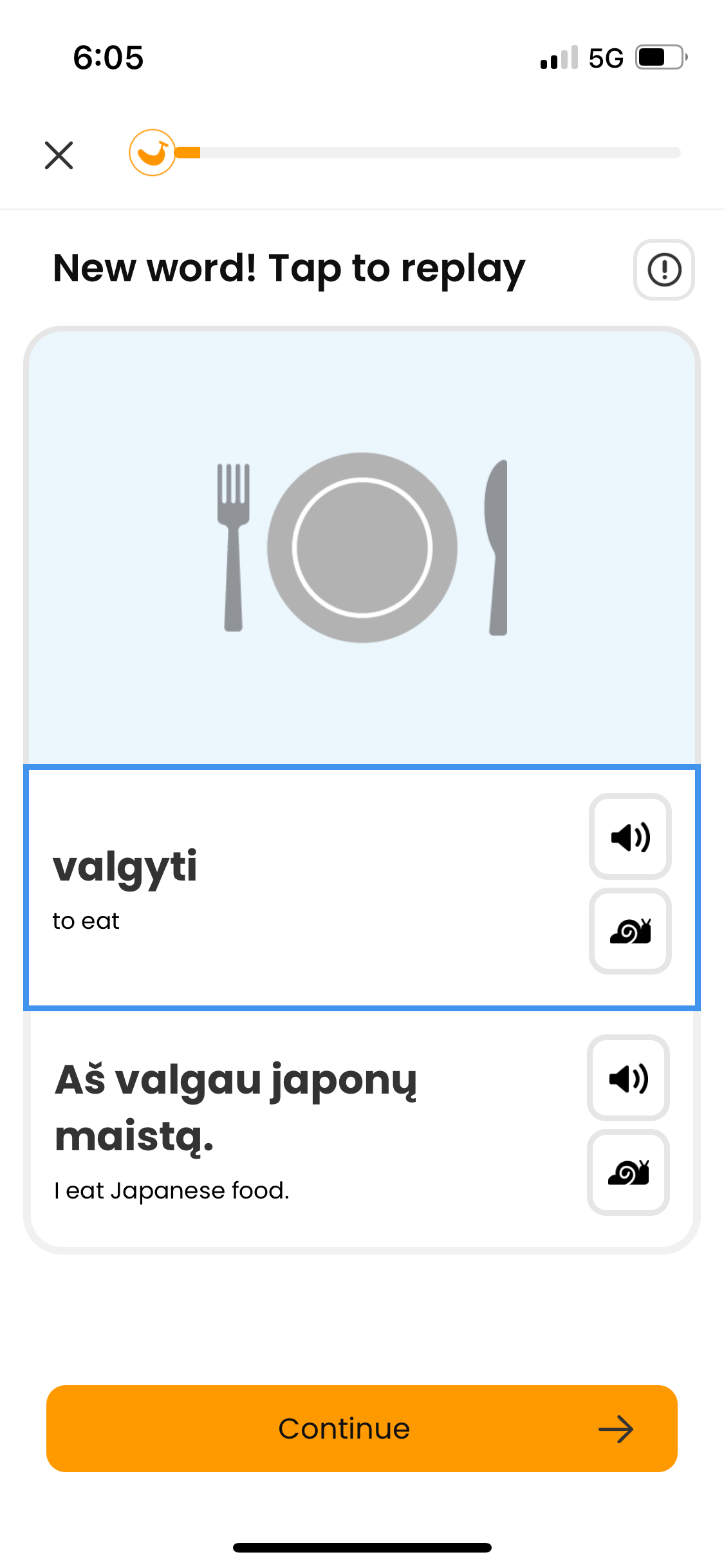
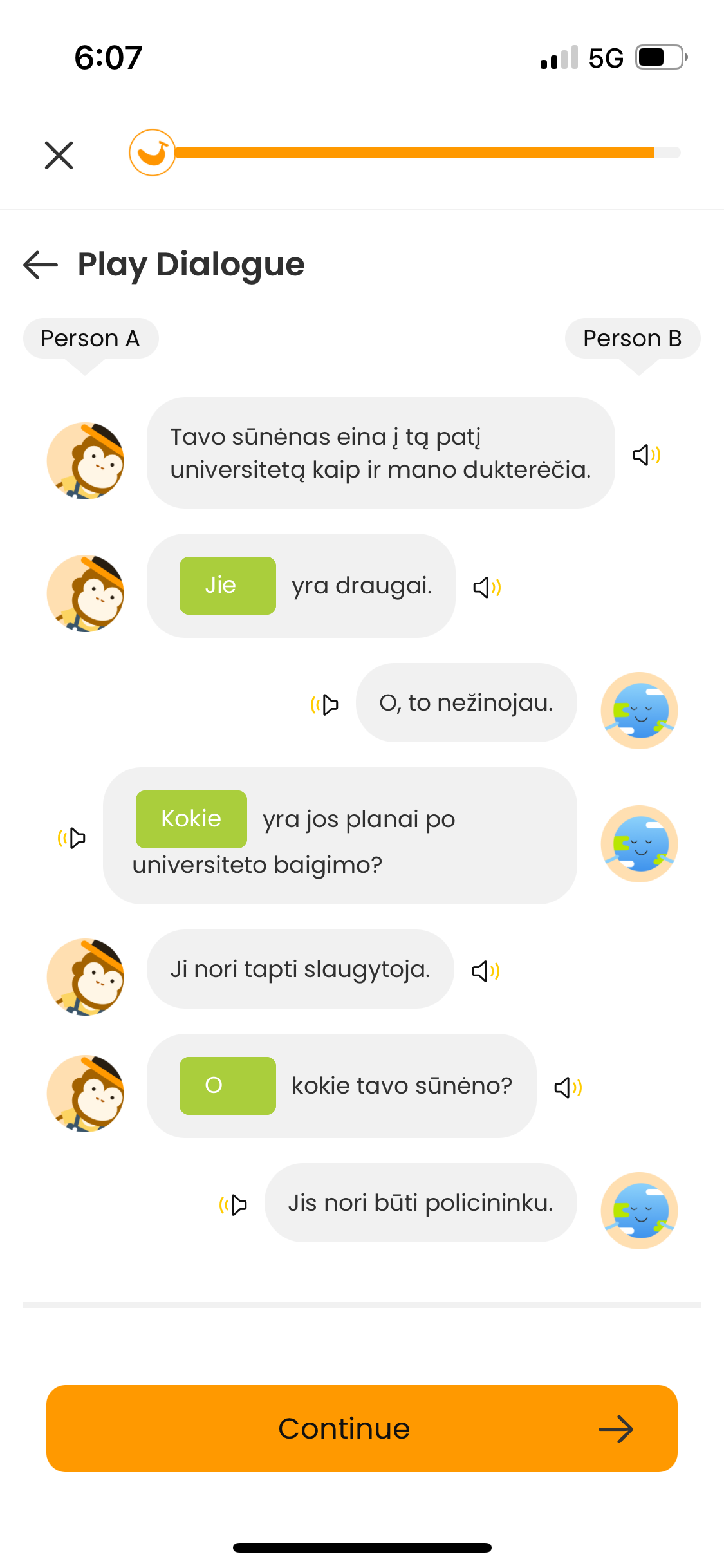
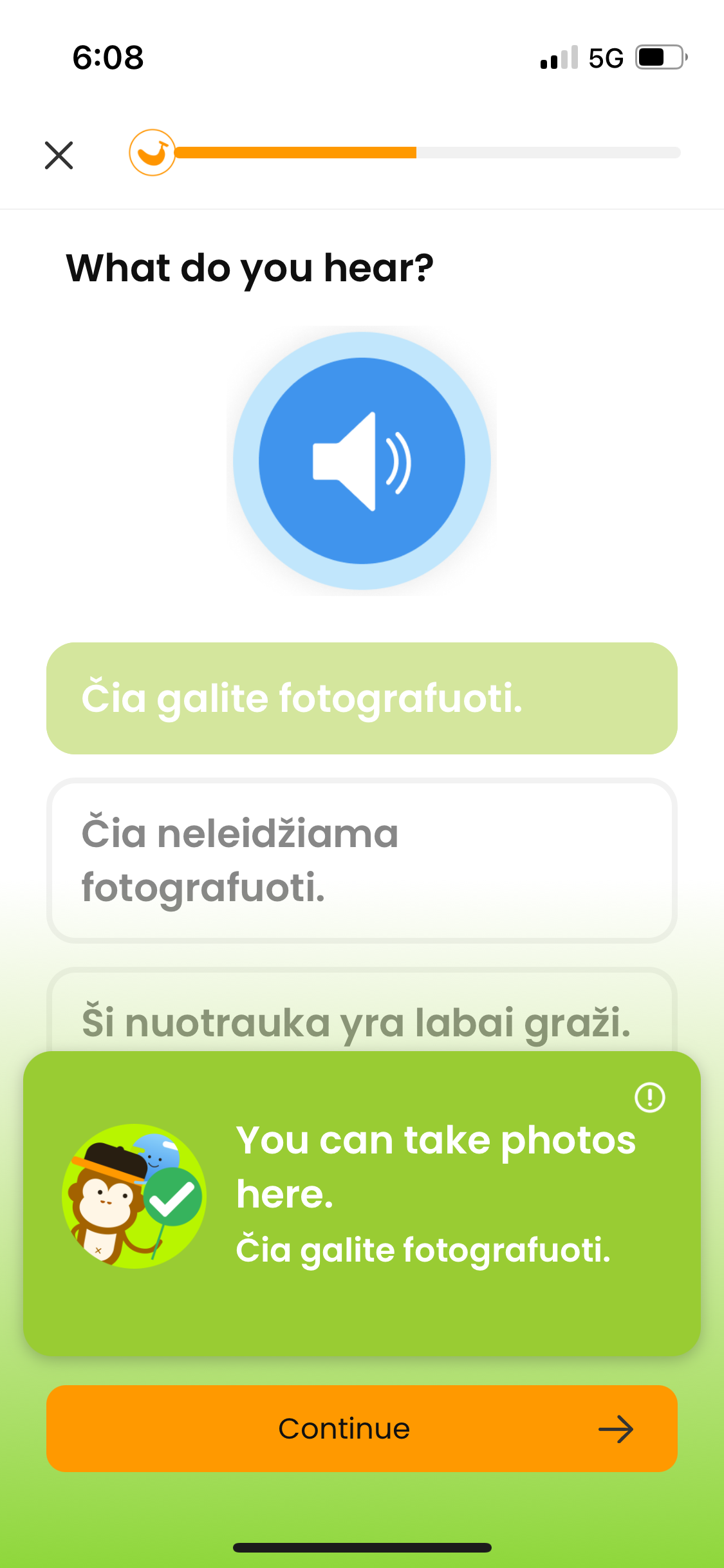
Quick Lithuanian Must-Knows
Want to know more about the language in Lithuania? Here are some must-knows!
Number of Speakers: 3.2 million
Official or National Language in: Lithuania (also spoken in Belarus, Latvia, Poland, and Russia)
Region: Eastern Europe
Language Family: Indo-European, Baltic
Writing System: Latin-based, left-to-right
Tonal or Non-tonal Language: Non-tonal, syllable-timed
Basic Word Order: Subject-Verb-Object (SVO)
Fun Lithuanian Language Facts
1
Phonetic Consistency
Lithuanian has remarkable phonemic consistency, which means each letter is associated with one sound. This differs from English, which often presents varied pronunciations for letter combinations. Lithuanian’s straightforward phonetics simplify learning, especially with those new to Eastern European languages.
2
Vowel Harmony
In Lithuanian, all vowels in a word harmonize with each other for smooth pronunciation. For example, notice when you say the phrase Labas Rytas (“Good Morning” in Lithuanian) how your mouth moves around for the vowels “a” and “i.”
3
Is Lithuanian Slavic
Despite being commonly mistaken for a Slavic language, Lithuanian is actually a Baltic language. In fact, Lithuanian is one of the oldest languages in the world that’s still spoken today.
Did You Know This About Lithuania?
Basketball Passion: Lithuania is extremely passionate about basketball. The sport is almost a religion in the country,
and Lithuanians have a strong tradition of excellence in basketball. Despite Lithuania’s relatively small population, they have won numerous medals in international basketball competitions, including Olympic medals!
UNESCO World Heritage Sites: Despite being a relatively small country, Lithuania boasts several UNESCO World Heritage Sites. These include the Old Town of Vilnius, the Curonian Spit, and the Kernavė Archaeological Site, a complex of archaeological sites representing ancient settlements and fortifications.
Survival Lithuanian Vocabulary and Phrases
Ever wondered how to say hello in Lithuanian? How about thank you in Lithuanian? Now you can! Ling has some survival Lithuanian words and phrases so you can talk with locals with confidence! For more, check out the best app to learn the language in Lithuania – Ling!
The Easy Path Philosophy
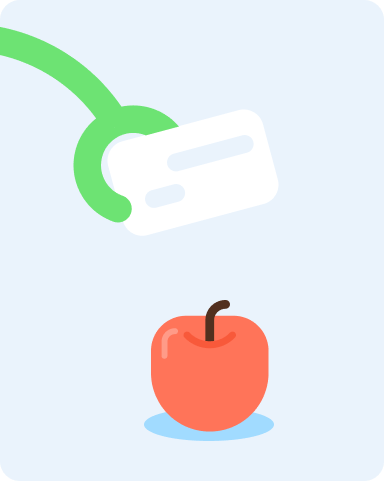

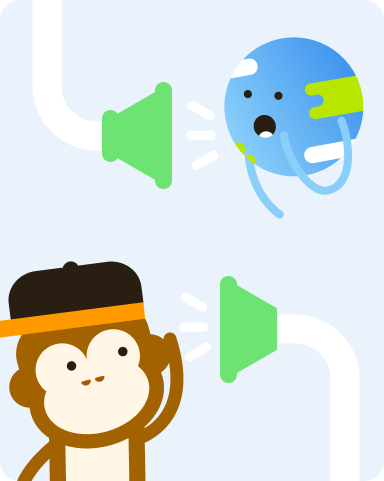
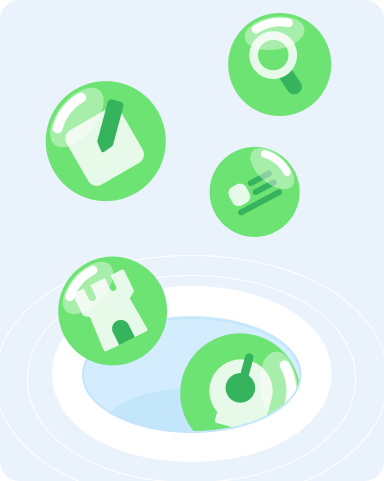
2 minutes to...
Learn new words and how to use them in a sentence.
3 minutes to...
Review vocabulary from current and past lessons with a variety of reinforced gamification techniques.
5 minutes to...
Listen and learn from natives through a conversation taken from a real-life context between 2 people.
And more...
Explore grammar-specific lessons, review features, and culture notes.
Kudos From Our Learners
Frequently asked questions about learning Lithuanian
Lithuanian belongs to the Indo-European language family from the Balto-Slavic branch. According to the Foreign Service Institute, Lithuanian is classified as a category III language, along with Khmer, Hindi, Tagalog, and Thai, which means it will take the average learner at least 1100 hours to reach proficiency.
Here are some essential tips to know when starting Lithuanian:
- Grammar: Lithuanian grammar has been greatly influenced by Proto-Indo-European and Sanskrit languages. As such, the grammar is quite different from modern and standardized languages. Mainly, Lithuanian is an inflected language with two genders for nouns and three genders for adjectives, numerals, participles, and pronouns. The language also has seven cases.
- Vocabulary: Since Lithuanian is one of the oldest languages, some of its vocabulary has no equivalence to English words. However, there are many shared cognates in classical languages such as Latin and Sanskrit.
- Speaking/Listening: Lithuanian features a lot of diphthongs, otherwise known as a gliding vowel. Standard Lithuania comes from the Lithuanian dialect Aukštaitian (Highland Lithuanian) in the West. At the same time, you can hear Samogitian (Lowland Lithuanian) in some of the Western regions, as well as North and South Lithuania.
- Reading/Writing: Lithuanian uses the Latin alphabet with extra diacritic characters (ą, č, ę, ė, į, š, ų, ū, ž) for a total of 32 letters. Writing and reading Lithuanian follows the sentence pattern Subject-Verb-Object.
Do you want learn Lithuanian? If so, you need to focus on the right techniques to effectively learn the language. If you can’t travel to Lithuania to learn the language from locals, the next best thing would be to find a reliable online resource. What better choice than the Ling app!
With the Ling app, you can learn how to speak, write, read, and write Lithuanian with the most engaging exercises and activities! The app also includes hundreds of essential phrases, that way you can speak to locals in complete sentences instead of with single words.
Make learning Lithuanian easier by:
- Listening to podcasts in Lithuanian and about Lithuanian news
- Watching YouTube videos about Lithuania
- Learning how to create basic phrases first before moving on to more complex sentence structures
- Creating topics and scenarios to boost your writing and speaking skills when learning the seven different cases
- Speaking with native Lithuanian speakers
- Not focusing on your mistakes
- Having fun by using the Ling App
There are an estimated 300 languages in the world, so why should you learn how to speak Lithuanian? Besides the fact that there are at least 2.8 million Lithuanian speakers globally, Lithuanian (Lietuvių kalba) is one of the oldest languages to date and is one of the European Union’s official languages.
Since Lithuanian is one of the earliest Indo-European languages, learning it will allow you to appreciate its beauty and understand how the European nations came to be. It’s for this reason that Lithuanian is so popular among linguists, language enthusiasts, and those curious about the history of ancient languages. Remember that having a purpose for studying a certain language will help keep you motivated!
Here are some other reasons why Lithuanian is worth learning:
- One of the oldest languages in existence today
- Form a connection with the history of Baltic and Slavic languages
- Make traveling to Lithuania easier
- Career advancement
- Improve your memory and overall brain function
The question of whether Lithuania is Slavic or Baltic is quite ambiguous and complex. In short, Lithuanian is considered to be a Baltic language along with other Eastern Baltic languages like Latvian, Latgalian, Old Curonian, Samogitian and extinct languages like Selonian and Semigallian.
As linguists have confirmed, Lithuania belongs to the Indo-European language family’s Balto-Slavic branch. However, the term Baltic languages for Lithuanian, Old Prussian, and Latvian was first coined by German linguist Ferdinand Nesselman in 1845. There are tonal similarities between Lithuanian and Serbo-Croatian languages, and you’ll also find the same stresses in Russian and Lithuanian on certain syllables.
Similar to Lithuanian is Latvian, another preserved language from the original Proto-Indo-European language family. However, Lithuanian includes more ancient grammar rules and phonology than Latvian.